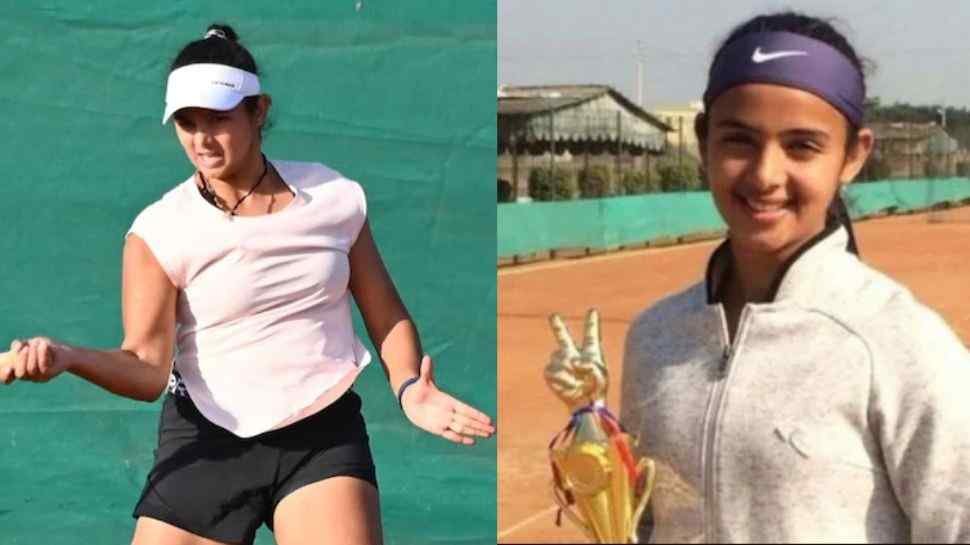The tragic death of Indian tennis player Radhika Yadav, a 24-year-old national-level tennis player who was shot dead by her father, has reverberated far beyond the realm of sports, striking a chord deep within the social consciousness of the nation.
Celebrated as a rising star in Indian tennis, her untimely passing is not merely an individual loss but a stark reflection of the insidious nature of internalized patriarchy, a condition where patriarchal norms and expectations are not only imposed externally by society but are also subconsciously absorbed and enacted by women themselves.
Behind the image of an accomplished athlete, Radhika’s life was marked by hidden pressures and gendered silences. Her death challenges the assumption that empowerment ensures freedom, revealing how structural inequality persists even in progressive spaces.
It’s a sobering reminder that talent and ambition cannot shield women from the quiet, systemic forces that erode their mental and emotional well-being.
Understanding Internalized Patriarchy: The Context
Radhika Yadav, a state-level tennis player who, after a successful run in the tennis tournaments, decided to set up her academy for young talents, was shot dead by her father. In his confession, he reported feeling ashamed and embarrassed as some of the people in the surroundings taunted him, saying that he was living off his daughter’s earnings.
Reportedly, he had asked her several times earlier to stop working at the academy. But Radhika Yadav refused. There are also reports that her father was unhappy about her creating and appearing in social media reels and music videos, which have become a source of income for many in recent times.
Radhika Yadav’s tragic death serves as a chilling embodiment of internalized patriarchy, not just in the daughter’s silent suffering, but in the father’s violent assertion of control. In patriarchal societies, the father is often seen as the ultimate authority figure, especially over daughters.
When a woman asserts autonomy, whether in career, relationships, or personal choices, it can be perceived as a direct threat to this ingrained control. That her father allegedly pulled the trigger is symbolic of how deeply patriarchal entitlement to a woman’s life and decisions is normalized.
This act also reflects internalized patriarchy in men, who are socialized to believe they must “discipline” or “protect family honour”— even at the cost of their daughter’s life. It reveals a violent internalization of the belief that a woman’s independence is a form of disobedience, one that must be punished.
In this way, Radhika’s murder was not just a personal tragedy. Still, a socially scripted act of gendered violence, born of a system where love is conflated with control, and honour with domination.
Gendered Silence and the Culture of Endurance
One of the most alarming aspects of Radhika’s case is the absence of earlier intervention. Friends, colleagues, and even coaches have hinted at changes in her behavior, but few stepped forward. Why?
Because gendered silence is a cultural norm, women are taught to endure, to adjust, to maintain peace at all costs. Speaking up is often seen as a threat to family honor or social stability.
Many women are discouraged from reporting emotional abuse, fearing they will be blamed, shamed, or not believed. In institutions like sports federations or training academies, gender-sensitive mental health support systems are rare or inaccessible.
This silence is not just individual; it has become institutional. The same systems that demand excellence from athletes offer little support for their emotional survival. And when a woman athlete struggles, the burden of failure is often placed squarely on her shoulders, without analyzing the cultural and structural factors that shaped her struggles.
A Feminist Analysis of Sports and Gender in India
Sports in India is an arena deeply influenced by gender, caste, and class hierarchies. For women athletes, the challenges are multifold — not only must they excel in their field, but they must also conform to social expectations of femininity, sacrifice, and emotional control.
Women in sports are often pressured to maintain a certain image: one that is graceful, obedient, and respectful. Assertiveness may be labeled arrogance. Success may invite resentment.
Families may expect them to prioritize marriage over medals. And when they suffer mental breakdowns or express dissatisfaction, they are met with disbelief or dismissed as being ‘too sensitive.’
Through a feminist lens, Radhika’s death is not an isolated tragedy but a systemic failure. It reflects a sports culture that has not yet fully embraced gender equity, emotional well-being, or intersectional support systems.
A feminist intervention calls for sports policies that not only include women but actively dismantle the gendered hierarchies that continue to silence and endanger them.
What Needs to Change: From Policy to Pedagogy
To truly prevent future tragedies like Radhika Yadav’s, we must move beyond the token inclusion of women in sports and confront the deeper structural issues they face. A critical first step is integrating mental health support into sports institutions.
These services must be accessible, gender-sensitive, and trauma-informed, recognizing the unique emotional challenges women athletes encounter. Additionally, safe and anonymous mechanisms for reporting abuse or coercion must be institutionalized to protect athletes from retaliation and silence.
Equally vital is educating families and communities in this regard. Often, emotional support is neglected in favour of superficial encouragement or financial backing.
Parents and local guardians/influencers need to be educated about the psychological realities of competitive sports, particularly for women.
Alongside this, establishing mentorship and peer support networks led by experienced women athletes can foster spaces of solidarity, where younger players feel seen, supported, and empowered to speak out.
Finally, systemic reform must be pursued at the policy level. National and state sports bodies must adopt comprehensive gender policies that go beyond medal counts and performance metrics.
These frameworks should prioritize the autonomy, dignity, and holistic well-being of women athletes. Without such integrated, feminist-oriented approaches, sporting success will continue to coexist with unseen suffering, and real change will remain elusive.
Conclusion: From Mourning to Meaning
Radhika Yadav’s death must not be reduced to a footnote in India’s sports history. It must become a catalyst for confronting internalized patriarchy, in homes, institutions, and minds.
Her life represents thousands of talented women who carry invisible burdens even as they break records. Until we interrogate the quiet violence of tradition, honor, and obedience expected of women, we will continue to lose brilliance to silence.
To honor Radhika is to create spaces where women are heard, seen, supported, and healed. It is to question not just overt patriarchy, but the inner scripts we’ve inherited and passed down. It is to stop glorifying endurance and start enabling expression.
Only then can we say, with conviction, that the courts women walk, be they tennis courts or life’s arenas, are not battlegrounds of gendered pain, but platforms for unfettered, fearless possibility.








